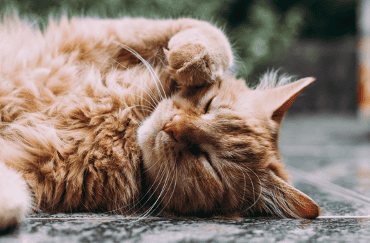Do you know the signs of internal bleeding in a cat? Read here for five telltale signs of internal bleeding in cats that you should watch out for.
Being a cat owner is one of the best experiences a person can have. They exist to be soft, lovable companions and bring joy to your home.
But they are also masters of hiding when they are unwell. They can go without care for many days, sometimes leading to severe conditions. And among the worst you can experience is having your cat suddenly die because of undetected internal bleeding.
So, to prevent this, we are sharing signs of internal bleeding in cats. This way, you can immediately save your pet’s life.
Decreased Appetite
Internal bleeding can cause a decrease in appetite due to the reduction of available blood. As the body needs blood for various processes such as digestion, with a reduction in blood, the cat will not be able to digest its food and absorb nutrients. It will decrease appetite as the cat will no longer feel as hungry as before.
This loss of appetite can become dangerous if left untreated. Your cat will not get the vitamins and minerals necessary to maintain health and well-being.
Vomiting
Vomiting is one of the signs of internal bleeding, usually in more severe cases. If your cat is vomiting blood, this can be a sign of a severe injury, trauma, or clotting disorder.
Vomiting can also indicate gastric ulceration, liver or kidney failure, or an intestinal tumor. So, if your cat is throwing up more than once in 24 hours, you should get it checked by a veterinarian immediately. They can provide the proper cat care and treatments they need.
Lethargy
Lethargy is one of the most common symptoms of internal bleeding. This symptom causes a cat to appear weak, tired, and sluggish. They may not demonstrate the usual energy that they typically have and may sleep more often.
Darkened Urine
If your cat’s urine appears black or has a pinkish, red, or bloody hue, there is a strong potential for underlying internal bleeding. It is due to hemoglobin in the blood being excreted in the urine.
It could indicate something minor, but it might also signal internal bleeding. Internal bleeding can lead to organ failure or even death when left untreated.
Difficulty Breathing
If a cat experiences a blunt force trauma or ruptured organ, blood can fill the chest cavity and impede the cat’s ability to breathe. As the cat attempts to inhale, the build-up of blood prevents air from entering its lungs. If this occurs, cats will often make a honking or squeaking sound when they attempt to take a breath.
Take them to the vet immediately, and to be prepared for the future, you should also take a class on pet first aid. It will help you mitigate any health issue that arises in emergencies. You can take a course online through websites like MyCPR NOW or check out your local veterinary clinic and ask if they offer classes.
Don’t Ignore These Signs of Internal Bleeding in Cats
Internal bleeding is a severe issue for cats and can have life-threatening consequences. So, if you notice any of the signs of internal bleeding in cats discussed above, it is essential to take them to the vet immediately. This way, they can receive proper diagnosis and treatment.
If you have any further questions, contact your veterinarian for professional advice.
Did you find this article helpful? If so, check out the rest of our site for more.

